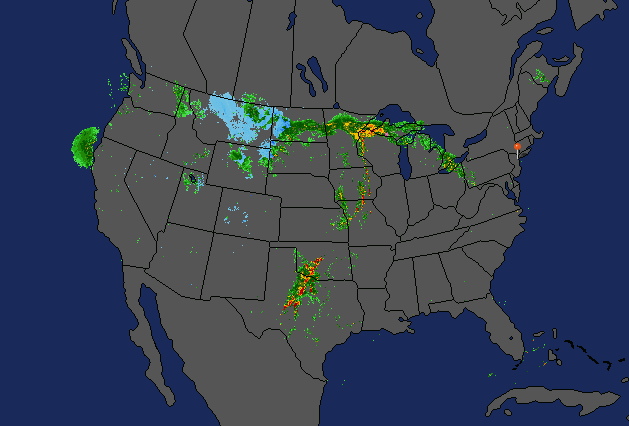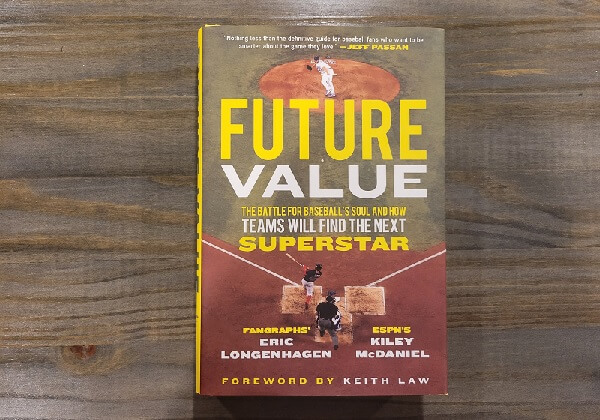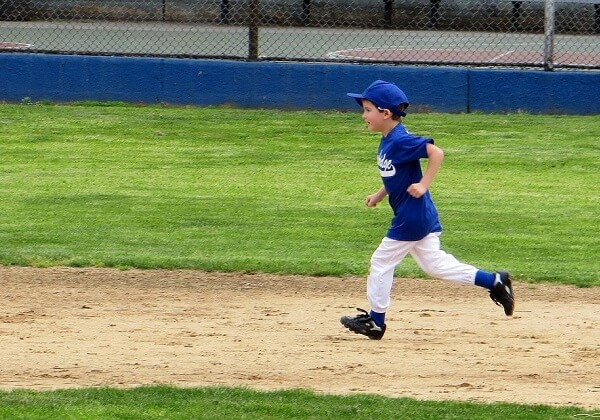How MLB robot umpires will work
by Fred Hofstetter on May 22, 2019It's happening in minor league baseball - the Atlantic League is the test subject for robot umps, and MLB won't be far behind. Here's how it will work.

Previewing the future MLB umpire crew.
Ready yourself for the next generation of baseball technology to thrust itself into 1) every pitch and forever change the way the game is played 2) every conversation you have with a gruff traditionalist type for the rest of your baseball fan life.
The robots are here. And they are angry.
That’s not true. They aren’t angry. The people are angry. The robots are neutral. More aggressively implementing automatic pitch calling in its current state will not eliminate the anger factor from baseball, which ought to mollify baseball’s biggest fans of manager meltdowns and shameless spitshows.
How robo-umps will work.
The first thing to understand about robot umpires is there aren’t really robot umpires, yet. Even if robot umpire advocates get the first phase of their way, there will still be people umpires. And they will still make every call.
Umpires will wear earpieces through which come suggestions for ball/strike calls via a Trackman computer system. Trackman is a ball tracking system that uses Doppler radar to determine where the ball crosses over the plate.

Doppler radar system for MLB robot umpires.
You’ve probably already heard of Statcast. Trackman is a crucial piece of ball tracking hardware that is one part of Statcast. And it’s responsible for the latest wave of baseball enthusiast buzzmetrics:
- Hitting: exit velocity, launch angle, spin rate, bearing, hang time.
- Pitching: vertical & horizontal break, release height & side, zone velocity, effective velocity.
Now when you witness a seismic blast off the bat of Giancarlo Stanton and think Oh my god that must have gone 600ft your local broadcast crew ruins the fun by quantifying it as 445ft and happily citing Statcast as the culprit for your disappointment.
This is how Dopper radar works.
If you’re like me and thought Huh, Doppler radar – I know what that is, but I don’t the next handful of sentences are for you. Otherwise, skip ahead.
“The basics of radars is that a beam of energy, called radio waves, is emitted from an antenna. As they strike objects in the atmosphere, the energy is scattered in all directions with some of the energy reflected directly back to the radar.
The larger the object, the greater the amount of energy that is returned to the radar. That provides us with the ability to ‘see’ rain drops in the atmosphere. In addition, the time it takes for the beam of energy to be transmitted and returned to the radar also provides is with the distance to that object.”
In other words, there are radio waves pulsing all over a baseball field to detect the movement of the baseball and its position in the environment. The radar system transmits pulses of radio waves and tracks the phase of the pulses (shape, position and form). Measuring the change in phase between the pulse transmitted and the echo coming back, you can calculate the movement toward or away from the radar. This is part of the process of determining where exactly a baseball is in a radar’d area at any time. And it’s pretty precise in estimating the ball’s position when it crosses home plate.
What pitch tracking can and can’t do.
Golf fans can thank Trackman for the mesmerizing trail tracing ball flight on PGA Tour broadcasts. It’s the technology used to populate the overlays you can see on broadcasts regularly in 2019. Viewers at home and play-by-play broadcasters can see immediately where a pitch crosses home plate. But on the field it’s still on old blue to make the call.
That’s about to change. The Atlantic League will be the guinea pig. There’s no question it will be tested in Major League Baseball at some point in the near future.
Pitch tracking has obvious benefits:
- Ball/strike calls are objectively correct.
- Catchers can no longer influence calls by framing pitches (sorry, catchers and market inefficiency enthusiasts. this is a benefit.).
- The strike zone that game isn’t subject to a human being’s whims.
- Lesser likelihood of an ump show.
However, it remains imperfect. A few shortcomings:
- Reliability. Sometimes it whiffs. Sometimes it’s just off. MLB’s switch from PITCHf/x to Statcast initially resulted in a backwards step in terms of pitch tracking. Of course, baseball fans understand the concept of replacement value. Just short of perfection remains better purely in terms of results than the status quo.
- How it detects bounced pitches. If a pitch bounces and crosses the plate over the strike zone, Trackman will report a strike.
- It can’t detect check swings. It’s ball tracking, not did-he-start-swinging tracking. Too subjective for Doppler.
For robo-ump advocates this is a step in the right direction. But it’s only a step. We’ve got a long ways to go before actual robot umpires.
Here’s how robot umps could work. In the future.
Actual robot umpires. Not some regular human taking a suggestion from a robot. Suggestions are weak, easily ignored and routinely gleefully disregarded by humans every day, not just MLB umpires trained and encouraged to emphasize entertainment over impartiality.
The best case scenario is an armored suit for all MLB umpires, featuring a fully-integrated artificial intelligence system capable of detecting ball flight and determining where the ball crosses the plate. Its tracking technology would be far beyond that of Doppler radar, able to adjust for balls bouncing before the plate and easily capable of reverse engineering the batter’s brain waves to determine if they truly meant to swing.
Look how cool this could be:
Every pre-game show would ditch 2 minutes of reporting W-L stats from probable pitchers and replace it with a live shot of the umpire crew dressing for the game.
Pros:
- Perfect ball/strike calls every time.
- A shred of the human element remains, since there’s a human inside the armor. The suit would be flexible for personalized and spontaneous gestures.
- Foul tips into sensitive areas would do no harm.
- The artificial intelligence system could be programmed to execute advanced techniques of influence and negotiation on managers, more efficiently deescalating arguments.
- In the case of a terrorist attack or alien invasion, the league would be adequately prepared on-field with advanced mobile weaponry (and accordingly, lower disaster insurance premiums).
Cons:
- None. None at all.
How will robot umpires be funded?
Same as stadiums: artificial monetary stimulus, your tax dollars and your grandkids’ salary.
Don’t worry, robot ump research & development will create so many jobs it’ll pay for itself. Robo-ump artificial intelligence technology will require a significant public investment of labor and capital to pay the marketers, public relations representatives and C-suite executives to convince the public progress is being made within the agreed upon budget and really make this thing happen.
Please join me in contacting your local governmental representative to facilitate legislation to begin production and make baseball slightly more effectual, maybe.

The latest articles

Book Review: The Cloudbuster Nine - by Anne R. Keene
by Fred Hofstetter on January 30, 2024Keene's comprehensive book tells several stories behind the V-5 Pre-Flight School in Chapel Hill, North Carolina: home to one of the rarest, greatest baseball teams in American history.

Book Review: The Glory of Their Times
by Fred Hofstetter on February 11, 2023There's good reason why The Glory of Their Times appears on every "best baseball book of all time" list you'll find anywhere.

Book Review: Future Value - Eric Longenhagen & Kiley McDaniel
by Fred Hofstetter on January 8, 2023Discover how amateur and pro baseball scouting is done, how departments are built, and how organizations find talent in Future Value.

Baseball players wear hats because wearing a hat is correct
by Fred Hofstetter on April 9, 2022Practicality explains why baseball players may want to wear a billed cap. But why does every player always wear a hat? Because it’s the right thing to do.
